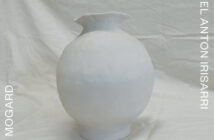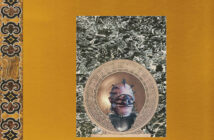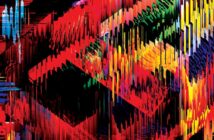There aren’ too many Melbourne labels releasing obscure spiritual Indo jazz from the early 70′ at the moment. Yet this nugget, reissued legitimately for the first time bears all the hallmarks of exotic genius, with tabla, sitar and tambura merging seamlessly with guitar, electric bass, violin, flute, alto flute, bass flute, drums, saxophone. This was never a working band and by all accounts it was heavily improvised and directed on the studio floor, but it is remarkably tight and feels highly arranged. It has to be. It’s that good.
It’s cosmic jazz tapping into the exotic eastern influence of psychedelic rock of the time, of the Beatles hanging out with the Maharishi. Yet where you’d expect it to be relatively tokenistic, particularly on the Indo side, it’s not because the bandleader is Bombay born Amancio D’Silva a renowned jazz guitarist in India who traveled to the UK for medical support when his son became ill and stayed on after his recovery. Whilst there he began working as a cleaner during the day and began gigging in the jazz scene at night. Hooking up with Anglo Indian classical violinist John Mayer and Jamaican saxophonist Joe Harriott, the trio recorded a series of albums with British jazz guys. It would be tempting to say 1972′ Cosmic Eye is their crowning achievement. Yet by all accounts they simply moved on to the next project without necessarily placing any additional significance on it. Yet they should have because it’s remarkable.
A lot of Indo jazz tends to be pretty pedestrian on either side of the ledger with tokenistic nods to the other, but Cosmic Eye feels like cutting edge jazz, music without a safety net. If Miles heard this he would’ve gone weak at the knees. Who knows, perhaps he did. Yet it’s not as simple as an attempt at integrating two disparate worlds, there’ grander compositional intent here, with nods to both Indian and Western classical musical, as well as the avant garde. Yet it also feels cohesive and it always feels very musical. At no time does it feel like pandering, on the contrary as a listener you’re trying to keep up. With two side long jazz ragas it dips in and out of small combinations of the larger ensemble, like bass flute, tabla and kit which are explored, extended, and exhausted before another highly organized combination appears. It moves quickly and seamlessly but always unexpectedly. This probably has a lot to do with the fact that the more western instrumentation comes from the cream of British session musicians at the time, and the playing is nothing short of virtuosic by all parties.
In short with extensive liner notes, great musicianship, really remarkable cutting edge compositions, an exotic yet vaguely familiar sound and an obscure near legendary status, this album is the crown jewel – one of the most remarkable artifacts you could ever hope to find.




